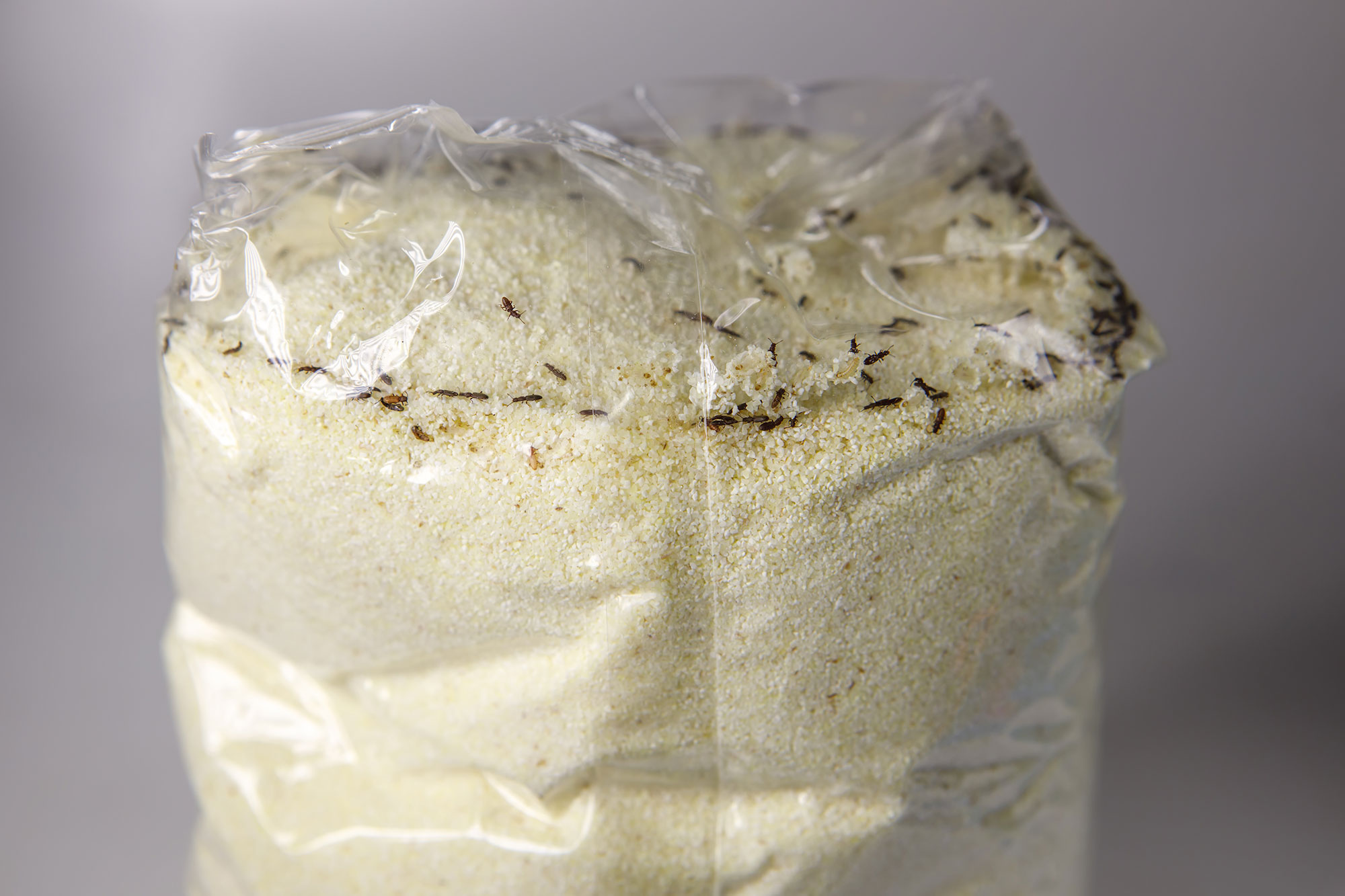What are these bugs in my cereal?
Stored Product Pests, also known as Pantry Pests, are a group of bugs with an appetite for dried and processed foods that most people have in their homes. Ever open up a bag of flour and notice small, black specks? Well, those specks aren’t poppy seeds. They’re bugs, so you might not want to bake with it.
What you’re seeing is one of a variety of stored product or pantry pests. These include small species of beetles, moths, and weevils that can infest a variety of food- and non-food products. Because they are so tiny, they can easily enter packaging through narrow crevices or tears.
Facilities that process, store or sell grains are always at risk for infestation, so oftentimes, stored goods arrive at your home already infiltrated by these pests. Their purposes in life are to eat and reproduce. Along the way, they contaminate your food. Don’t be the next breeding ground!
What do pantry pests eat?
Pantry pests consume a number of both food- and non-food products. These include but are not limited to:
- Breakfast foods (cereals)
- Flour
- Cake mixes
- Cookies
- Cornmeal
- Grits
- Dry soups
- Dried herbs & spices
- Candy
- Chocolate
- Rice
- Dried fruits & vegetables
- Popcorn
- Beans
- Nuts & seeds
- Biscuit mix
- Pasta
- Dog food & treats
- Birdseed
- Decorations containing seeds or dried spices
- Cosmetics
- Some prescription medications
Do I have pantry pests?
If you’ve noticed a concentration of moths or other bugs near your pantry, cupboard, or other food storage location, you might have an infestation. These are just the adults – if you’ve seen them, their offspring are more than likely hiding and feeding in places unseen. You’ll want to check those items in your home listed above. When inspecting bags or boxes, be sure to shake the container or pour its contents out onto a flat surface. These bugs tend to burrow as they eat.
Another way to detect the presence of pantry pests is to lay out sticky traps. These traps are baited with pheromones or food odor that attract the bugs. You know the rest…they get stuck, they check in but they don’t check out, etc. Sticky traps can be effective for figuring out if you have these bugs in your kitchen. They can also be useful for determining the extent of the infestation. However, sticky traps won’t help you get rid of these stored product pests.
How to get rid of stored product pests
The first step to defeating pantry pests is to eliminate their food source. That means removing contaminated items from your home. Dispose of infested food products. Move uncontaminated stored foods to tightly sealed glass or plastic containers.
Clean out your pantry. Remove everything, throw away old food, vacuum the shelves, then wash them with warm, soapy water. Vacuum around the pantry baseboards and mop the floor inside. When buying groceries, purchase small packages that you can consume in 2-4 months. Use the “first in, first out” rule when pulling foods from your pantry.
If you store grass seed, dog food, and/or bird seed in your kitchen or garage, make sure they are also tightly sealed.
Additional steps to preventing stored product pests from invading your home:
- Use proper sanitation
- Clean up spills right away
- Store foods that are prone to infestation in the fridge or freezer
- Spray insecticides (Beware of the ingredients. You’ll need to be careful since you’re spraying near consumables.)
McCarthy Pest & Termite Control for help with pantry pests
For most species of stored product pests, there are multiple generations produced per year. That means they can breed and spread quickly if left untreated. Once an infestation occurs, it can be difficult to eradicate. Don’t let it get that far! If you’ve done all you can and still see signs of an infestation, call us for professional and personalized pest solutions.



